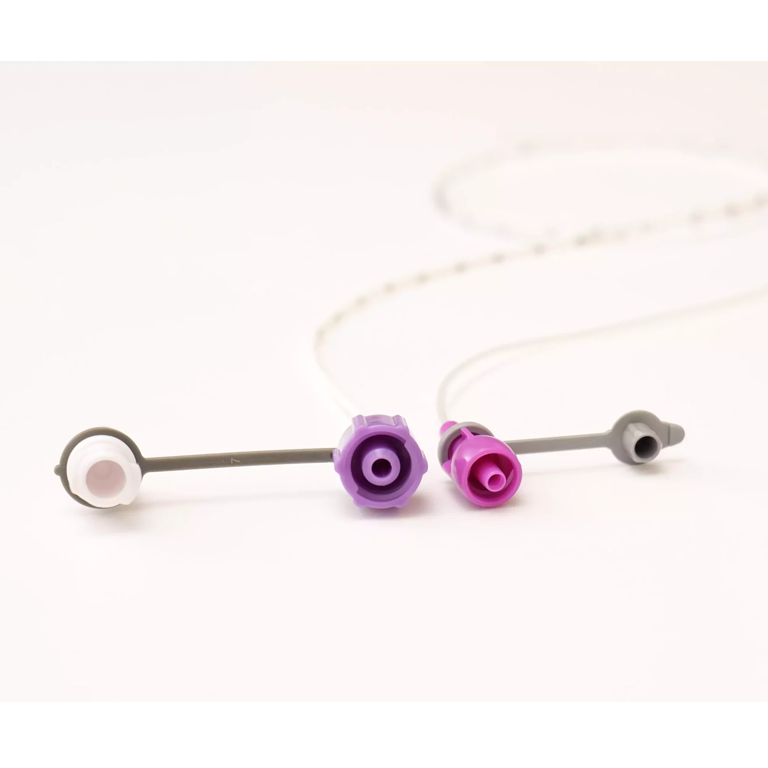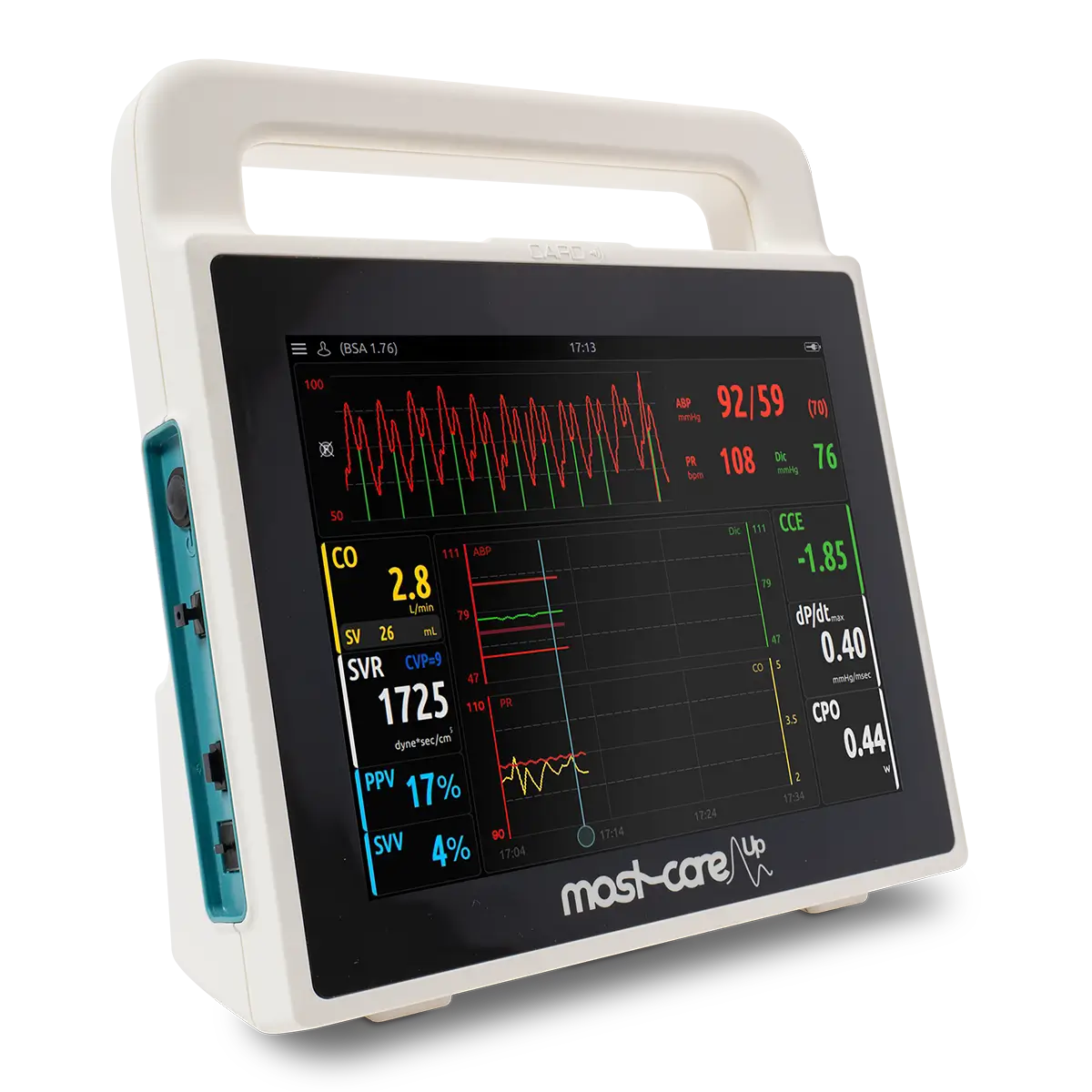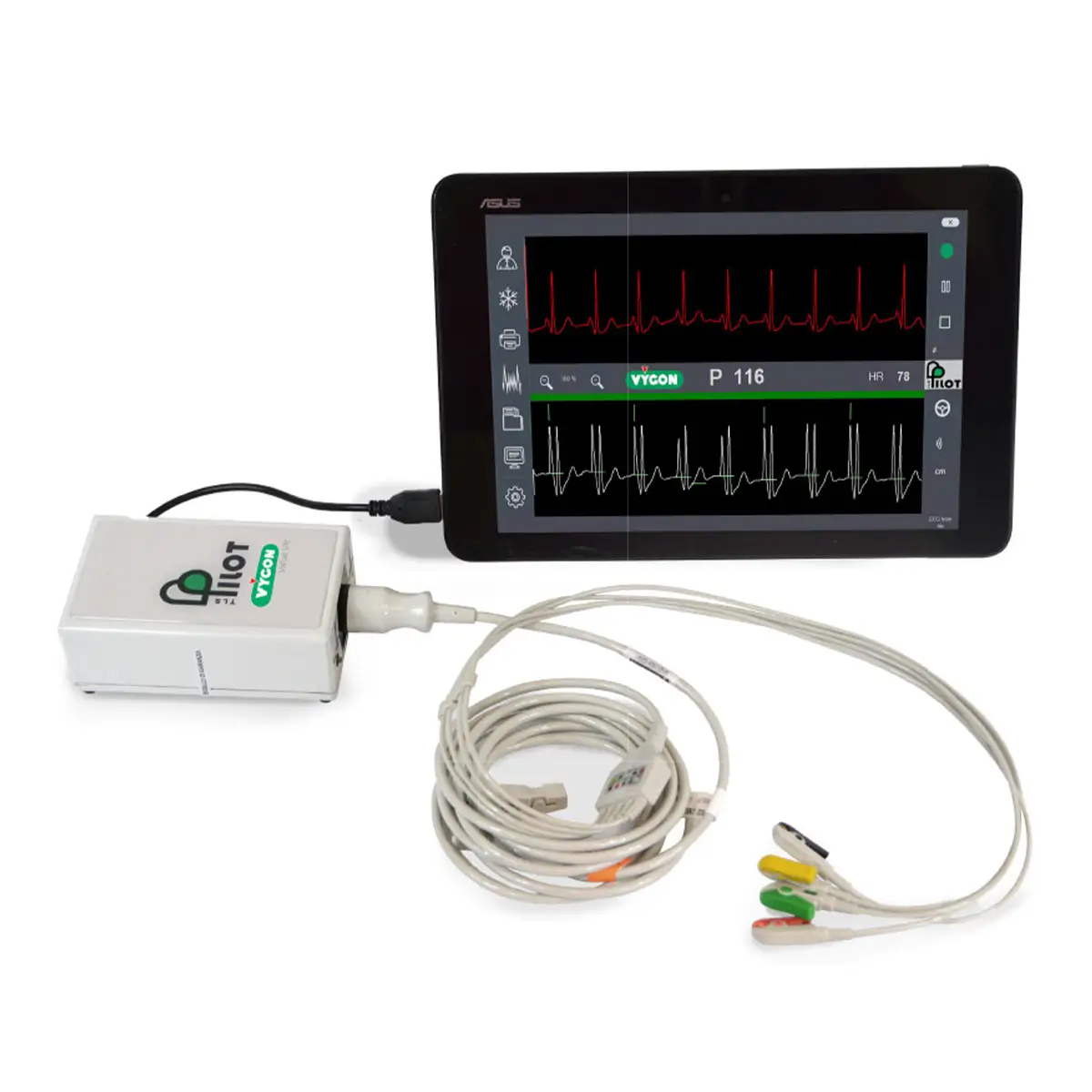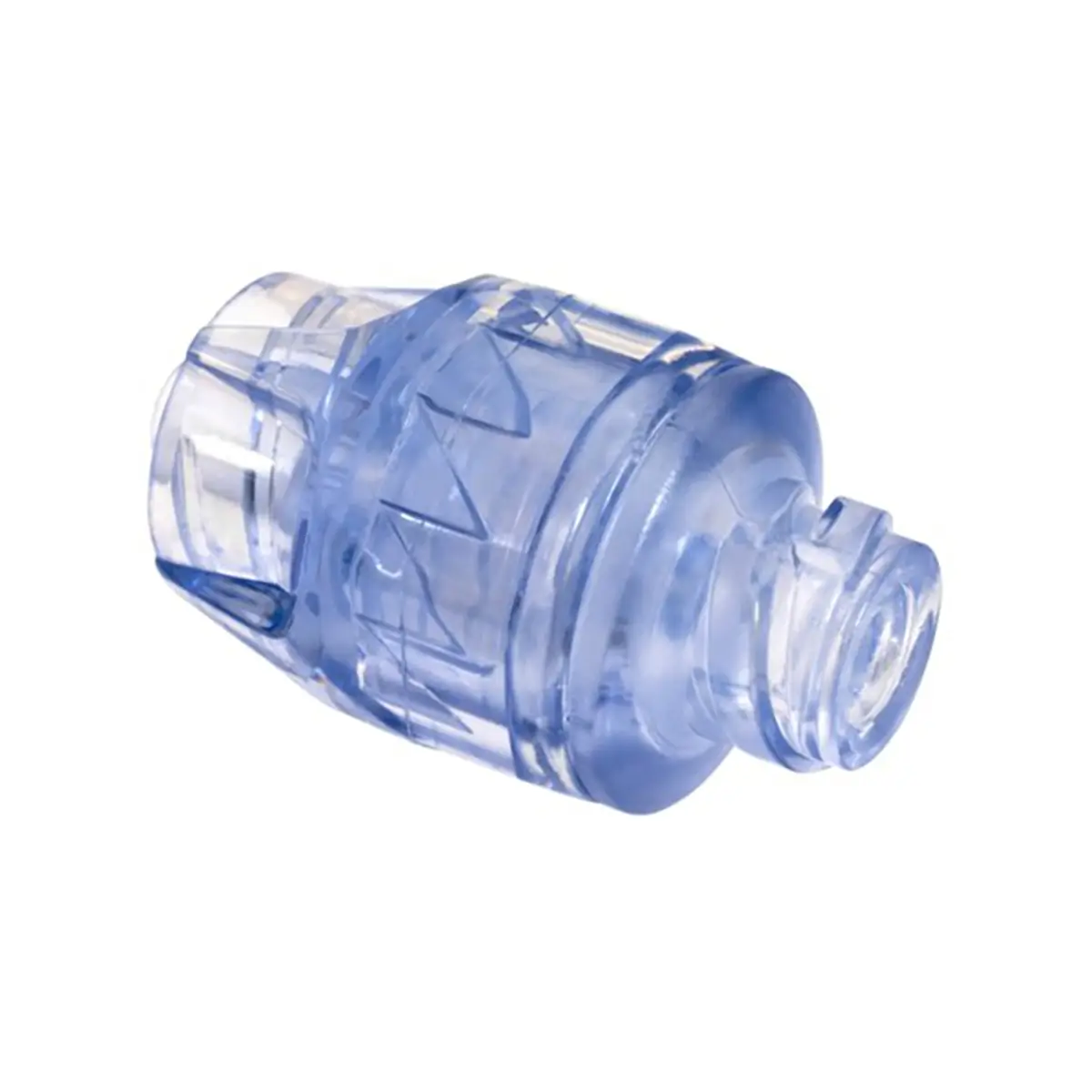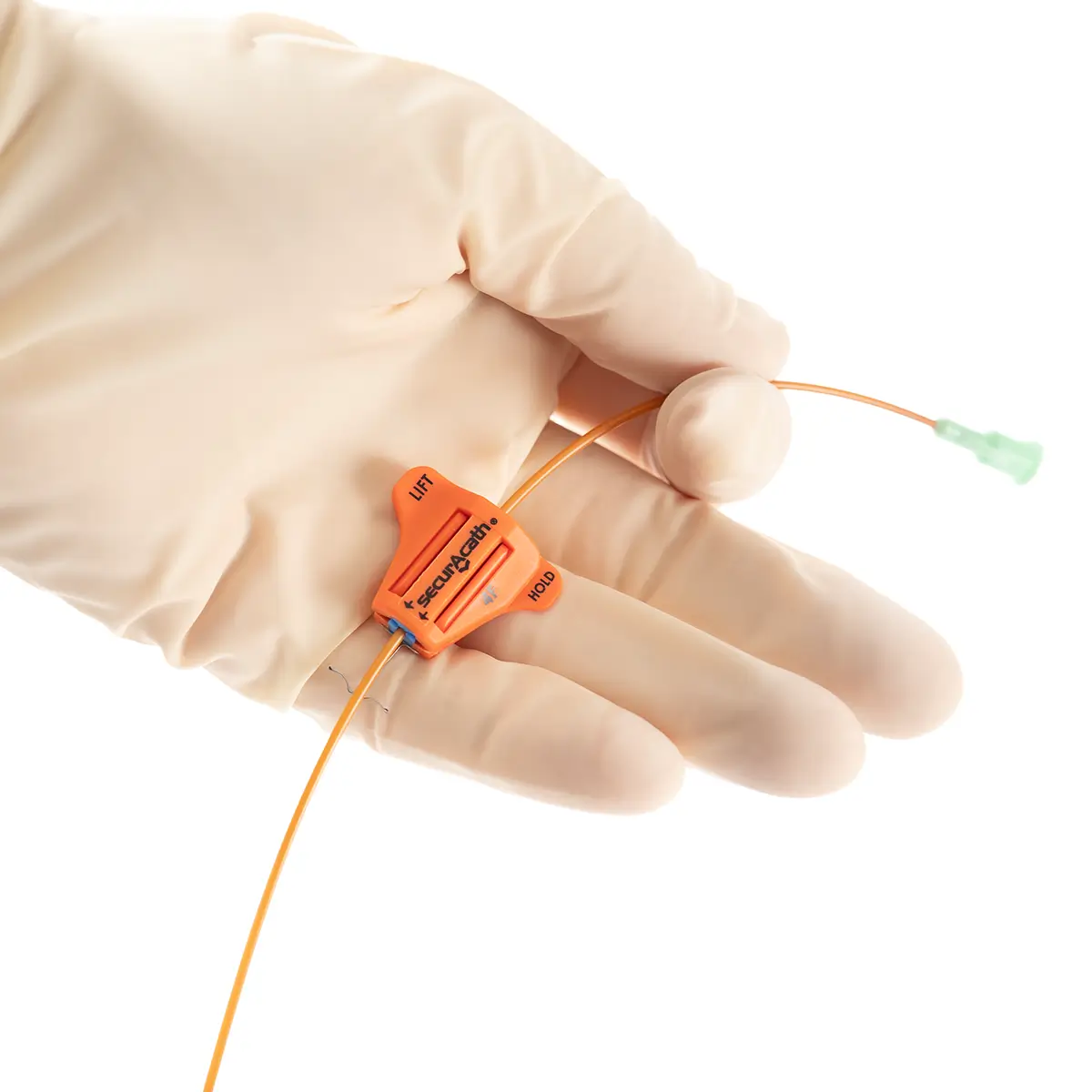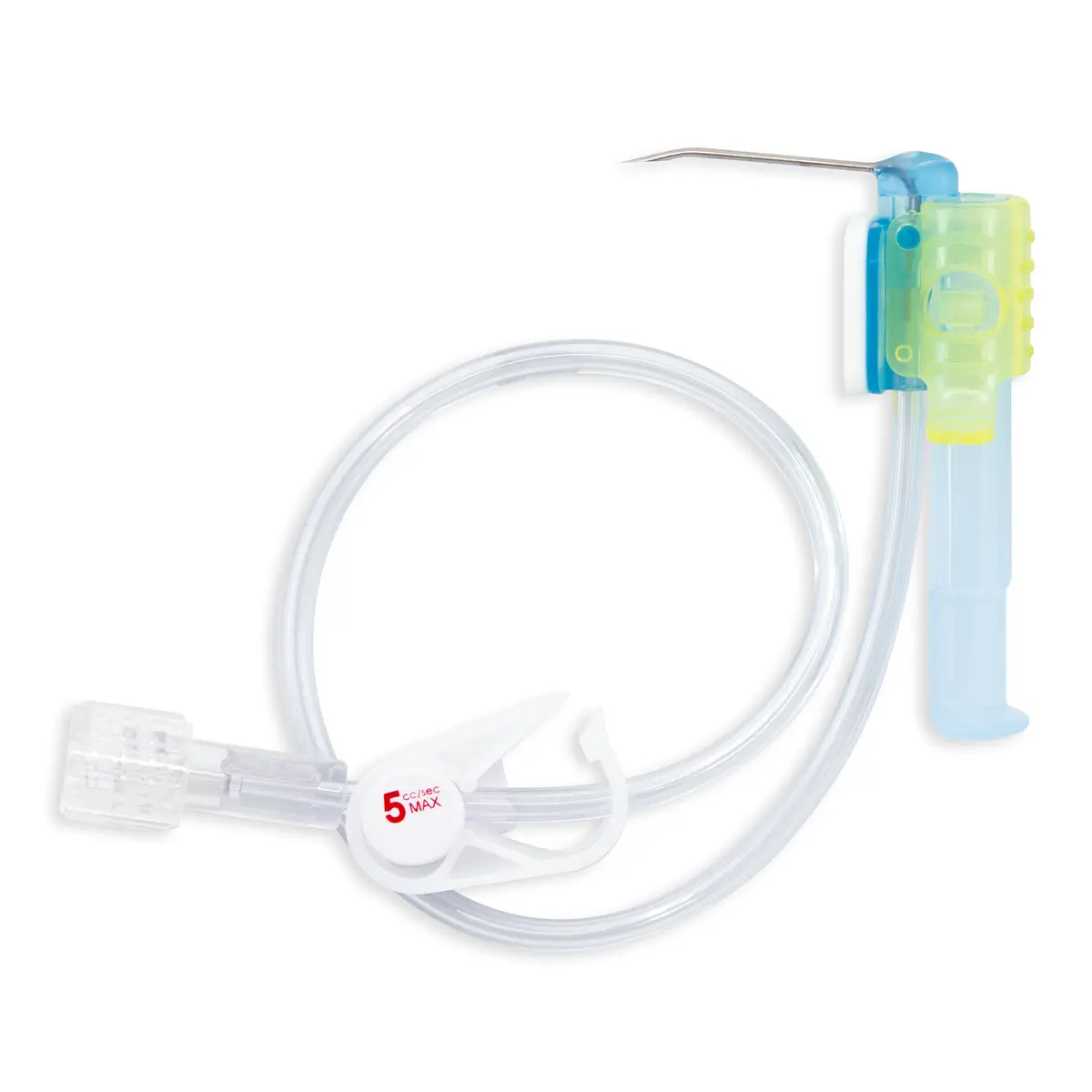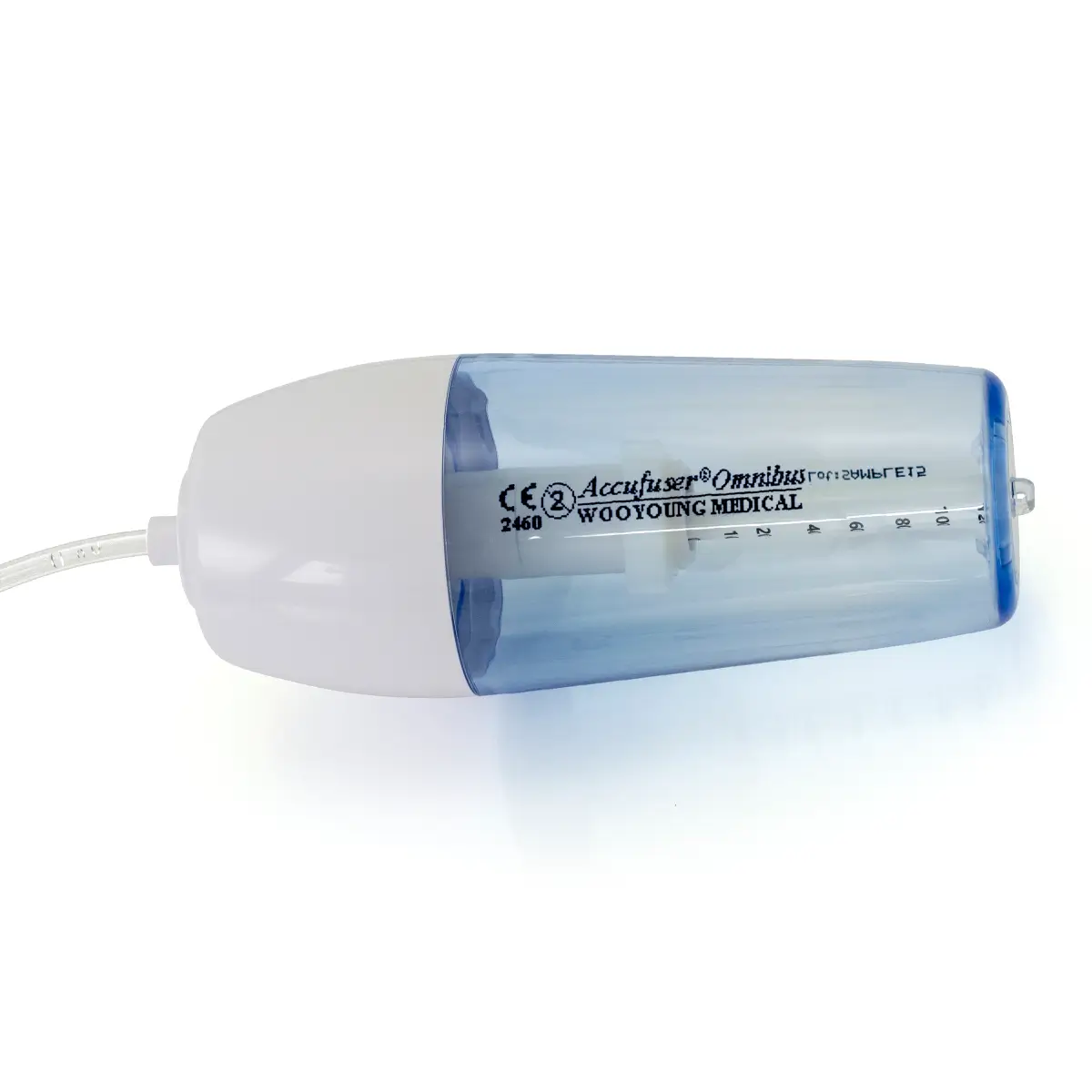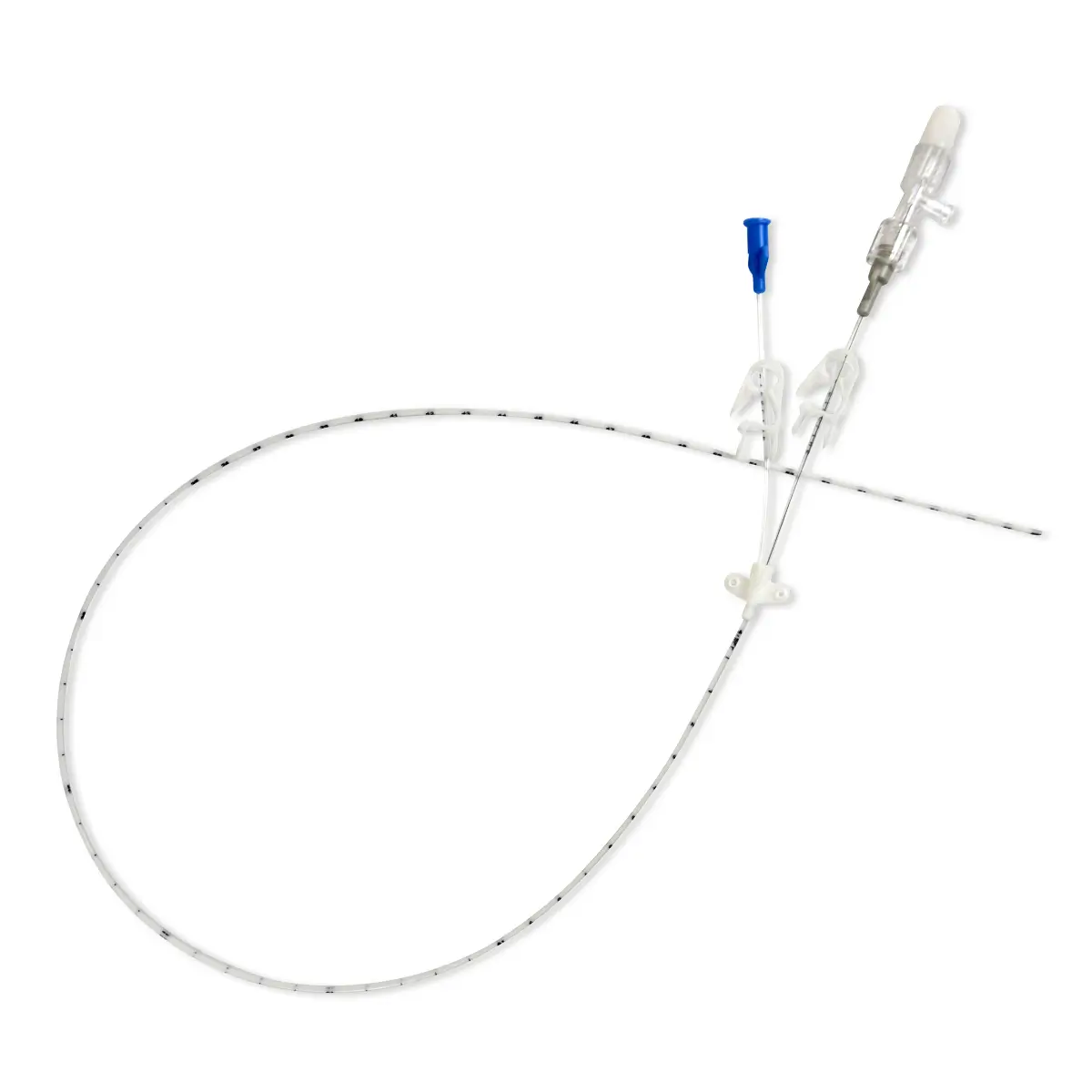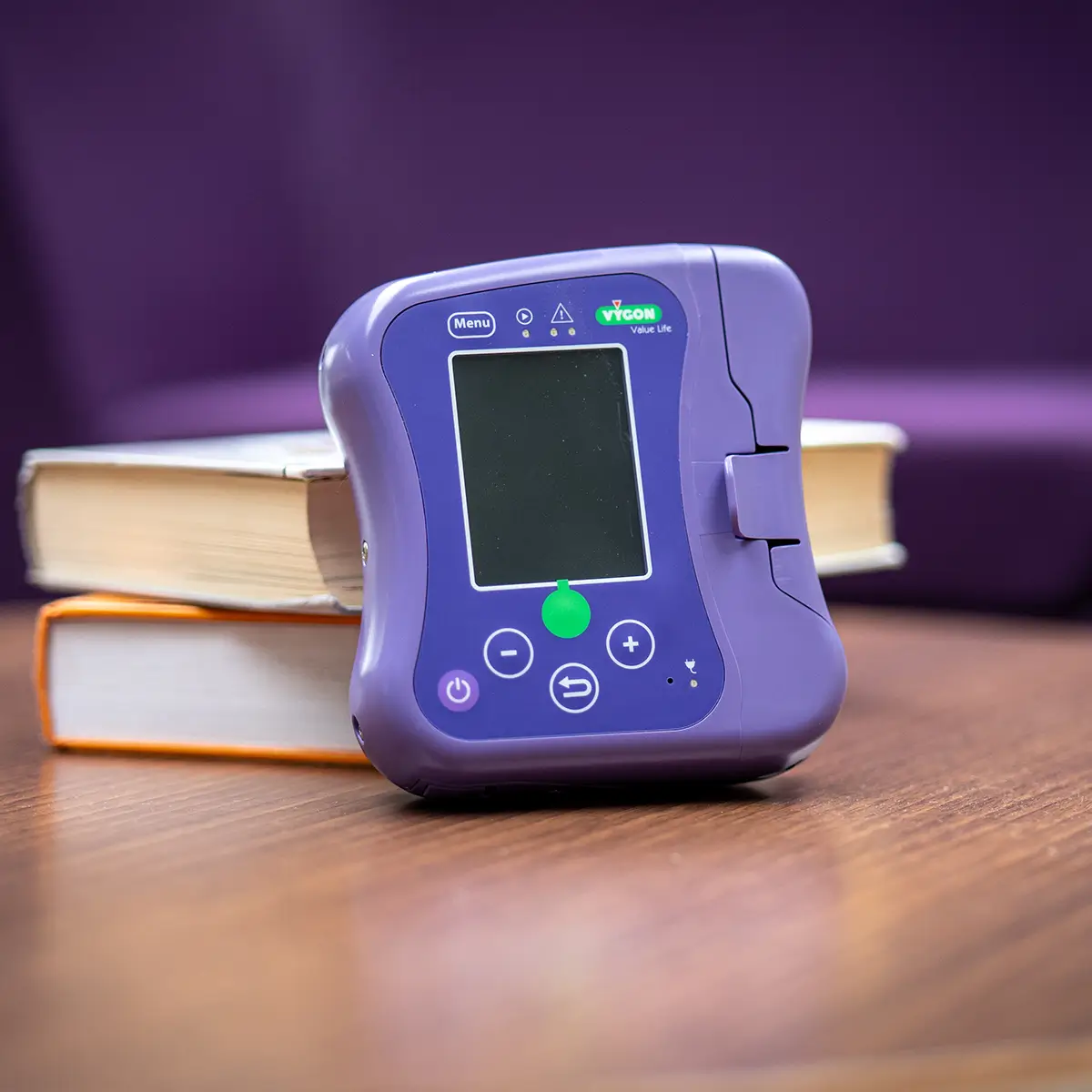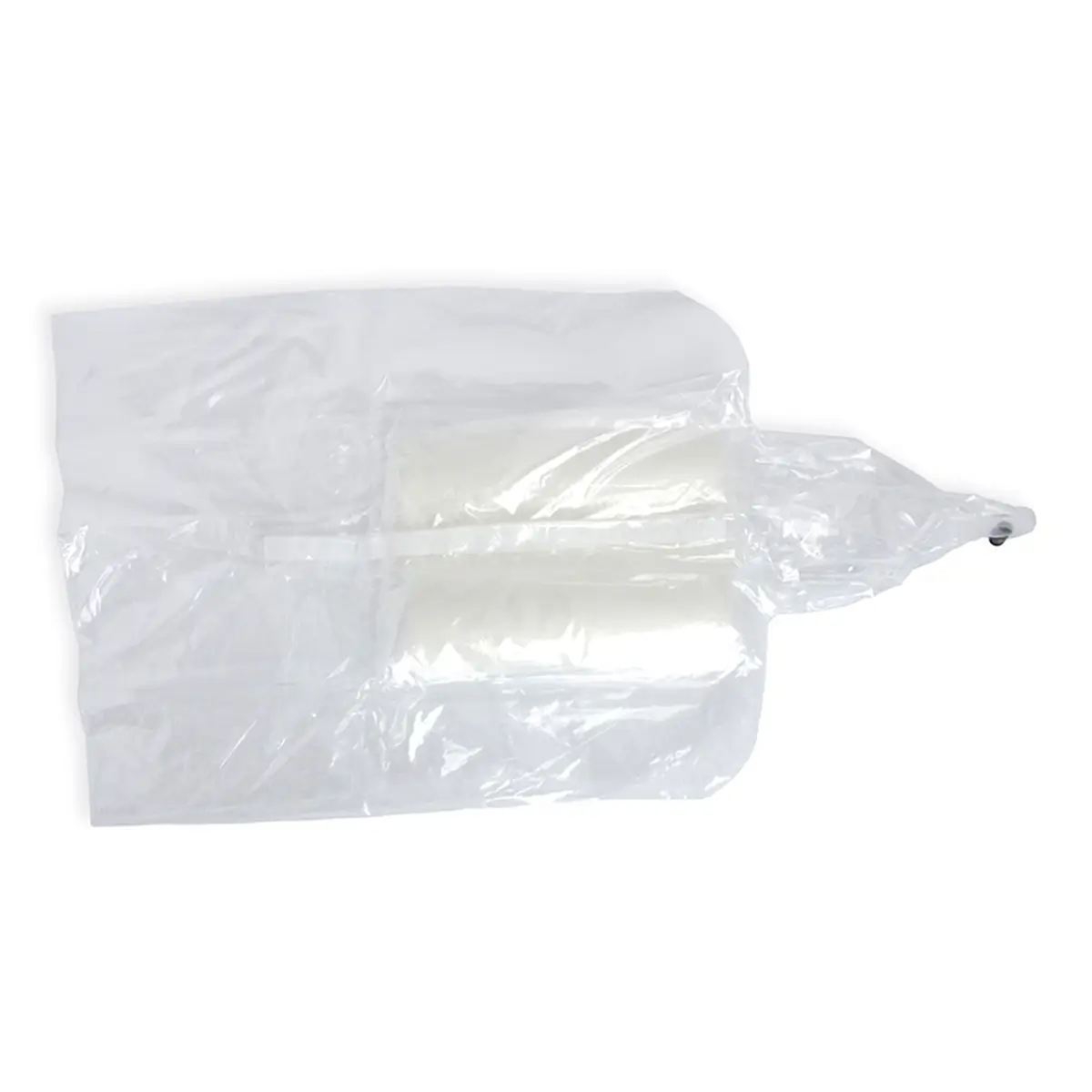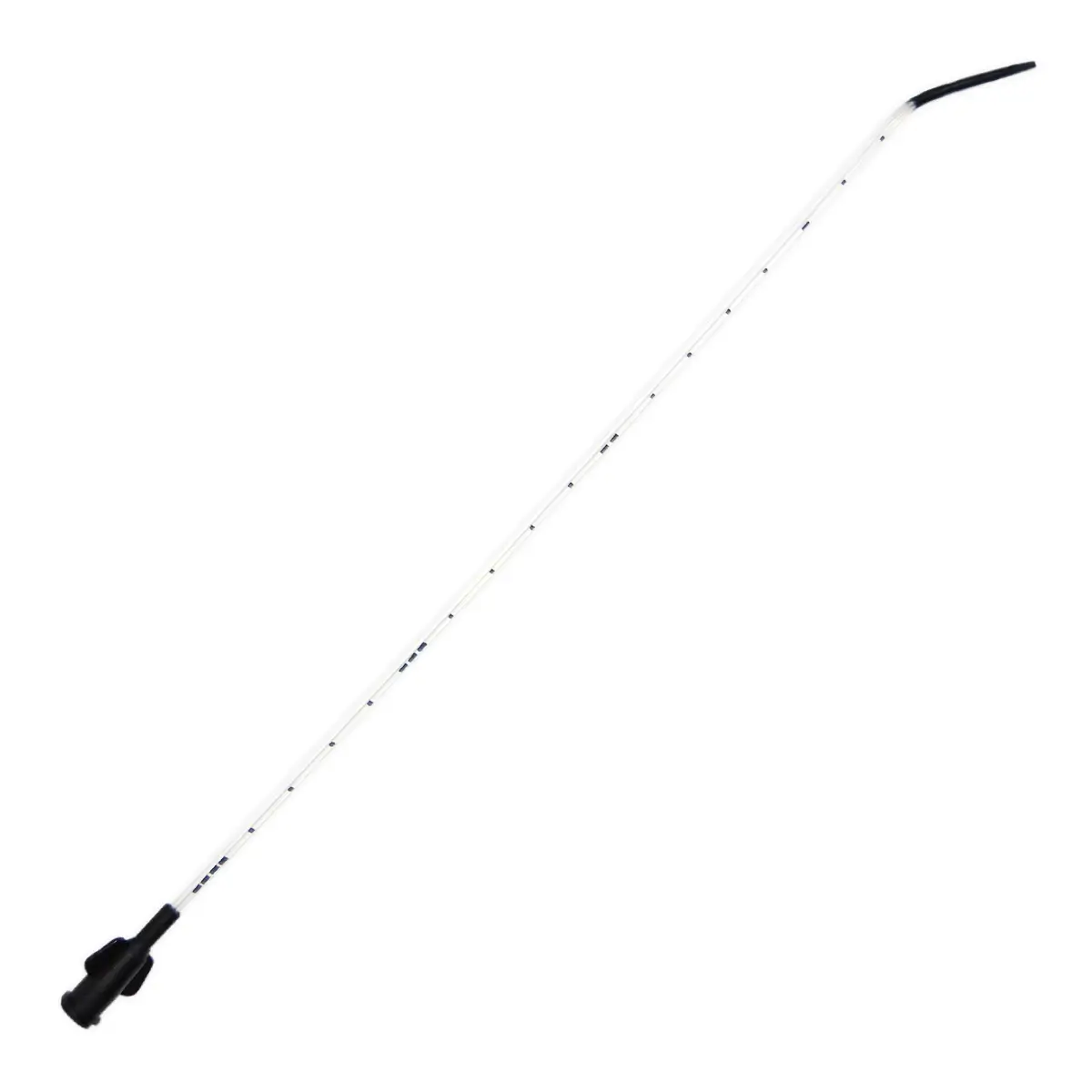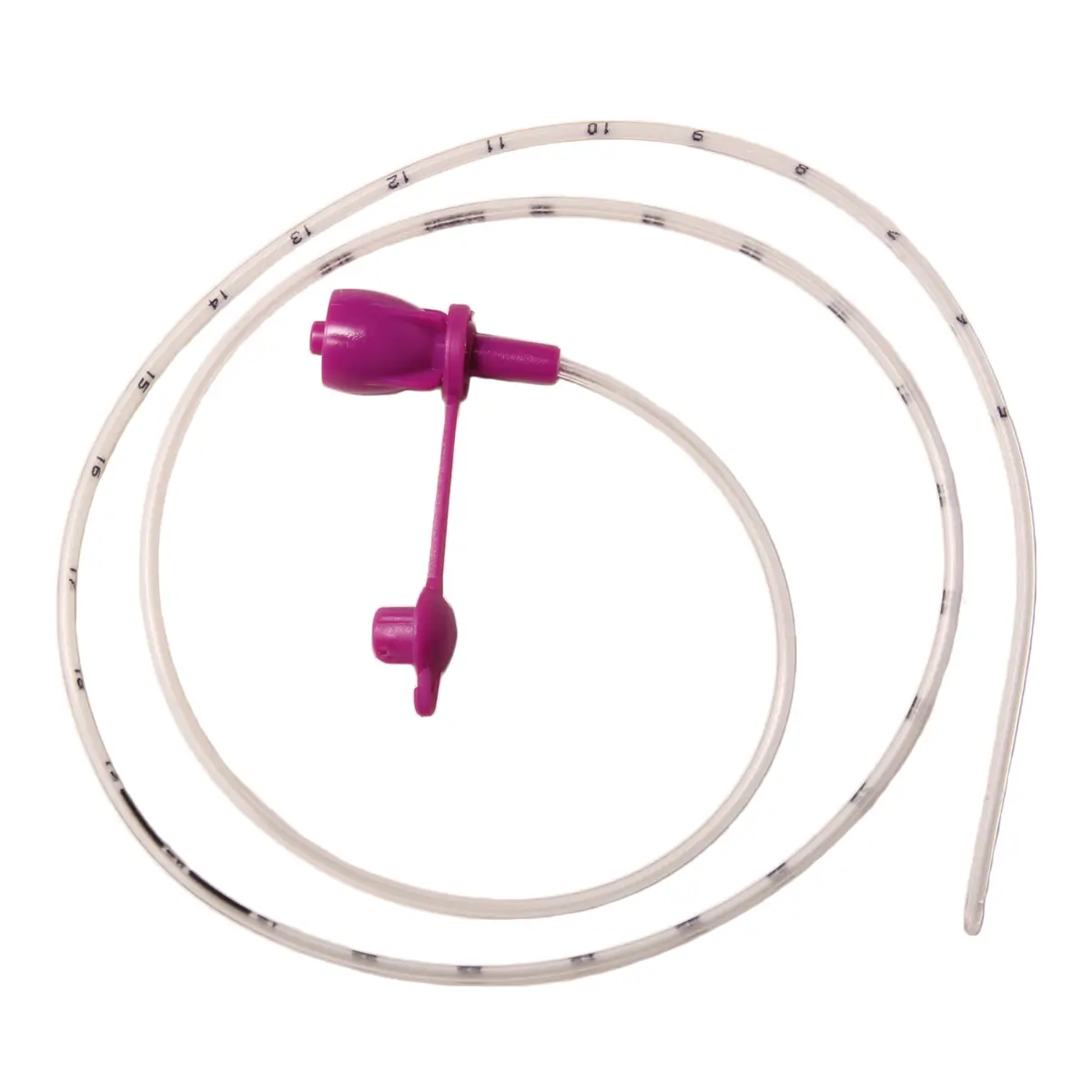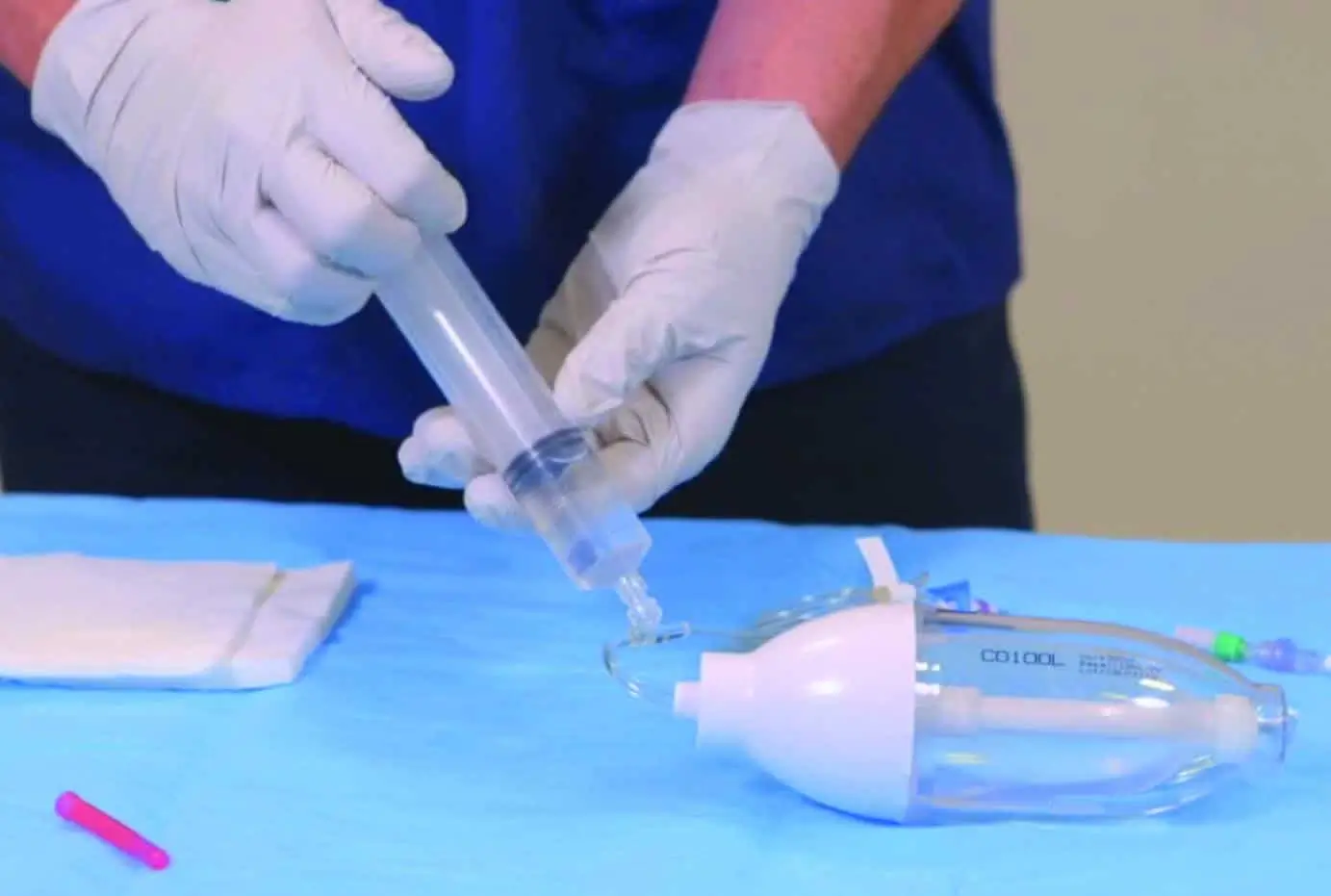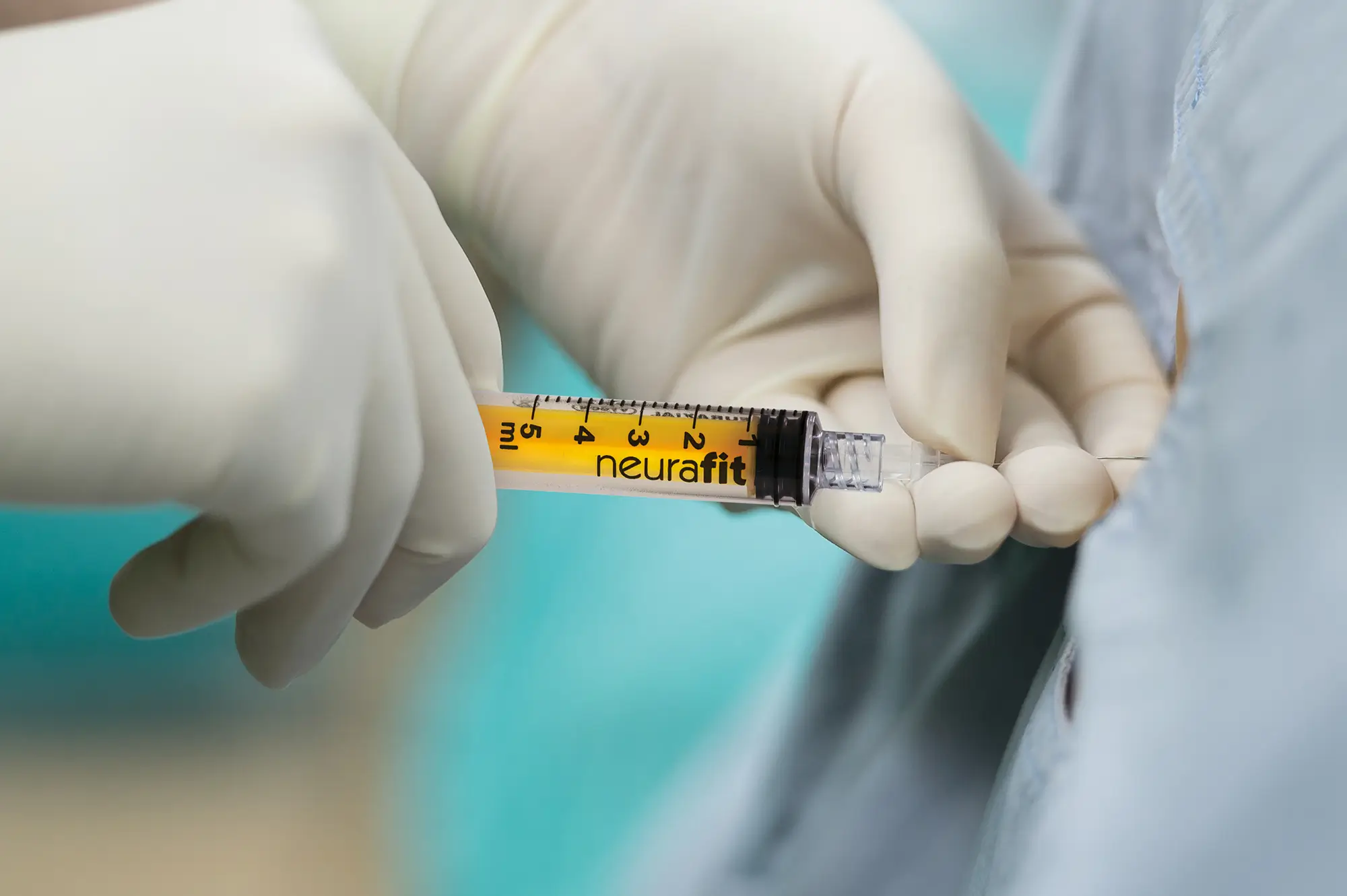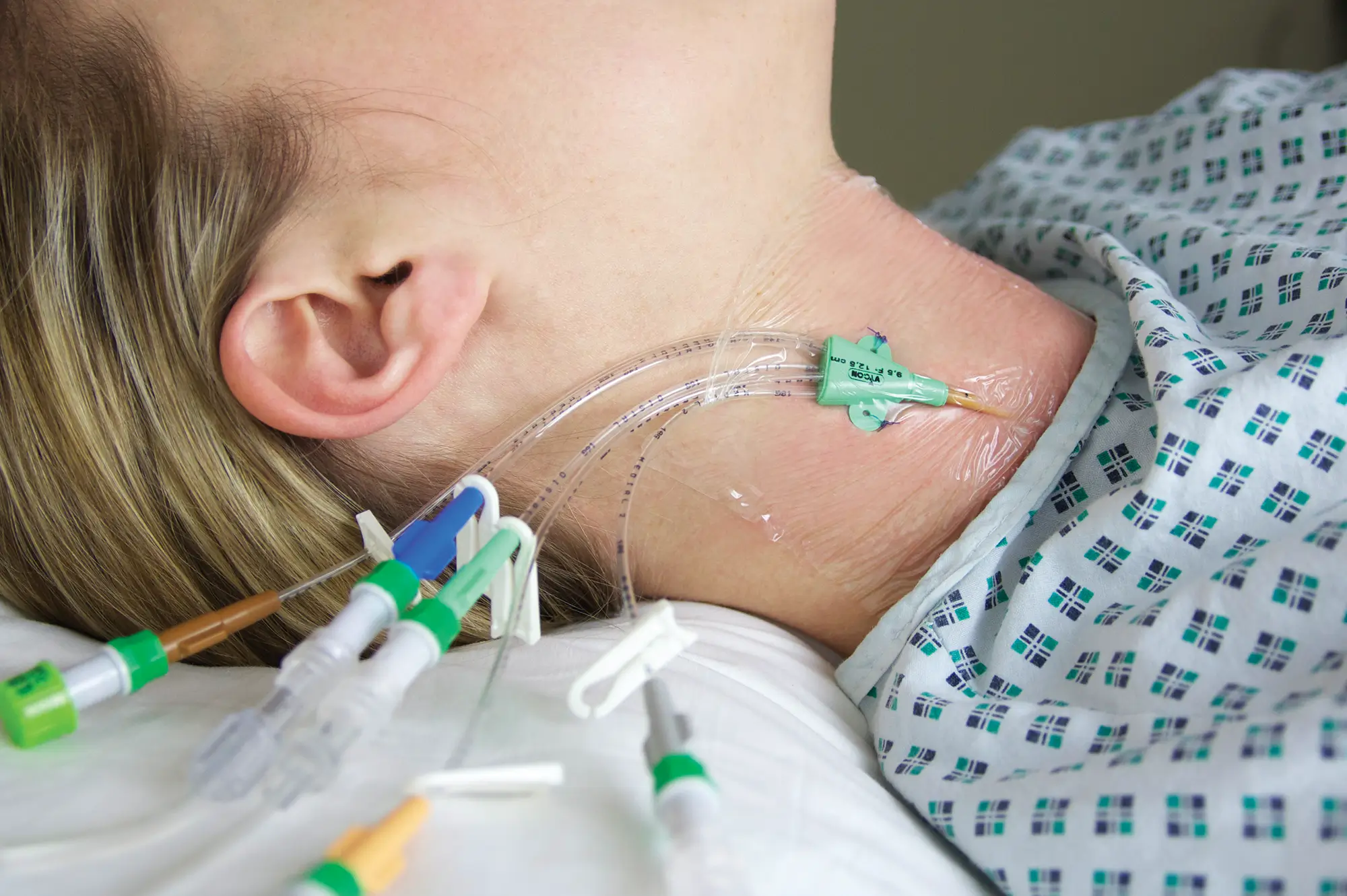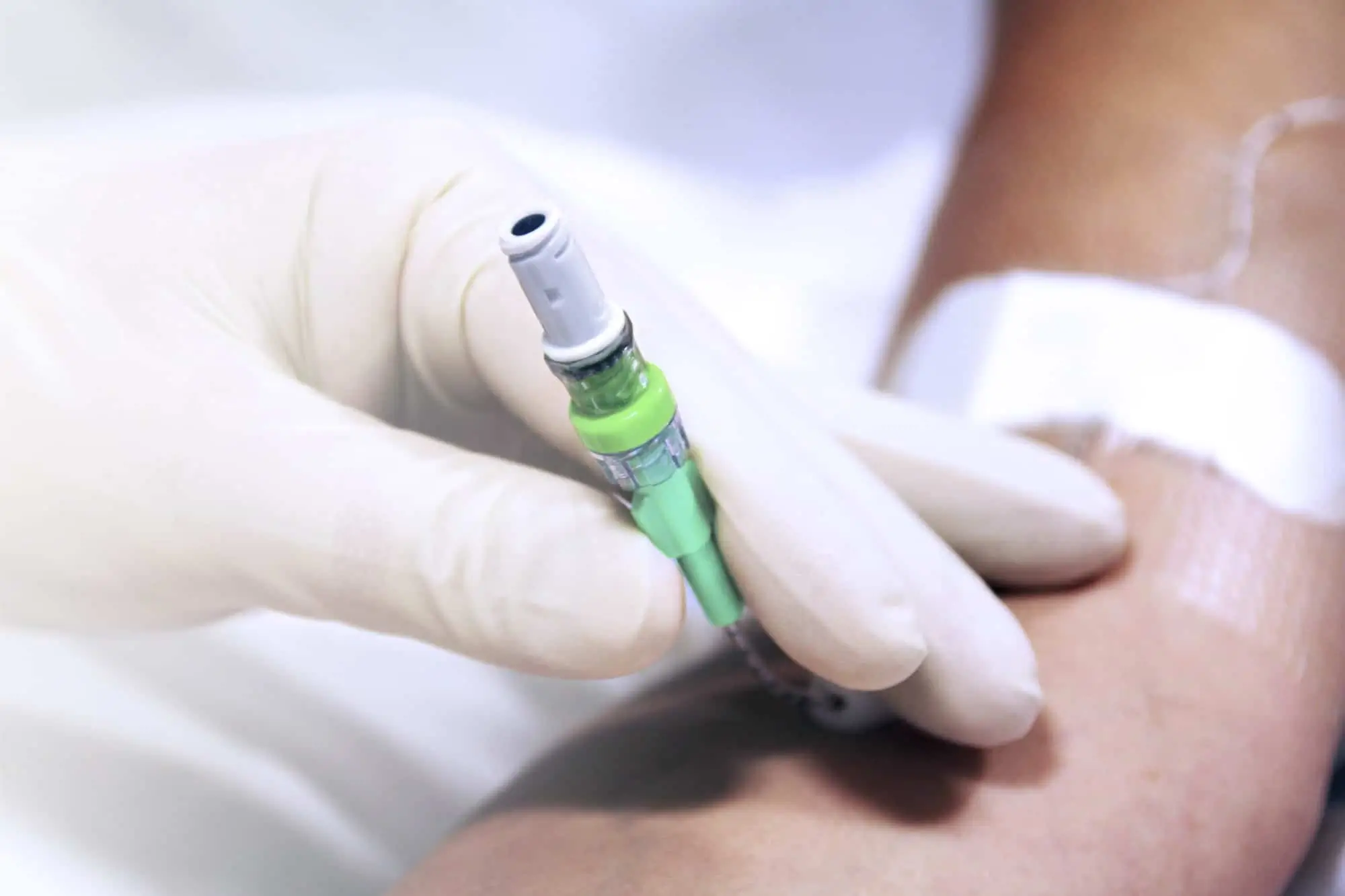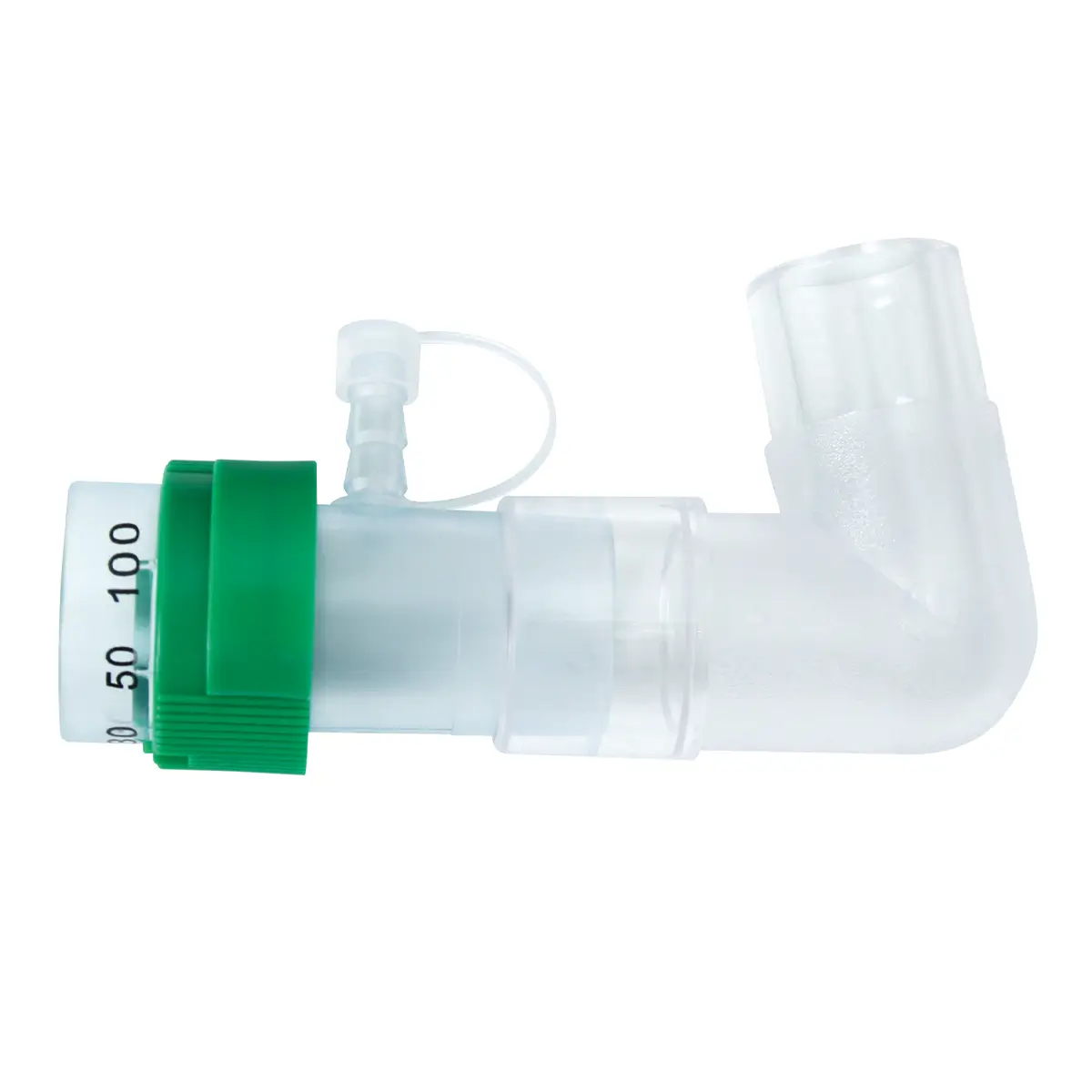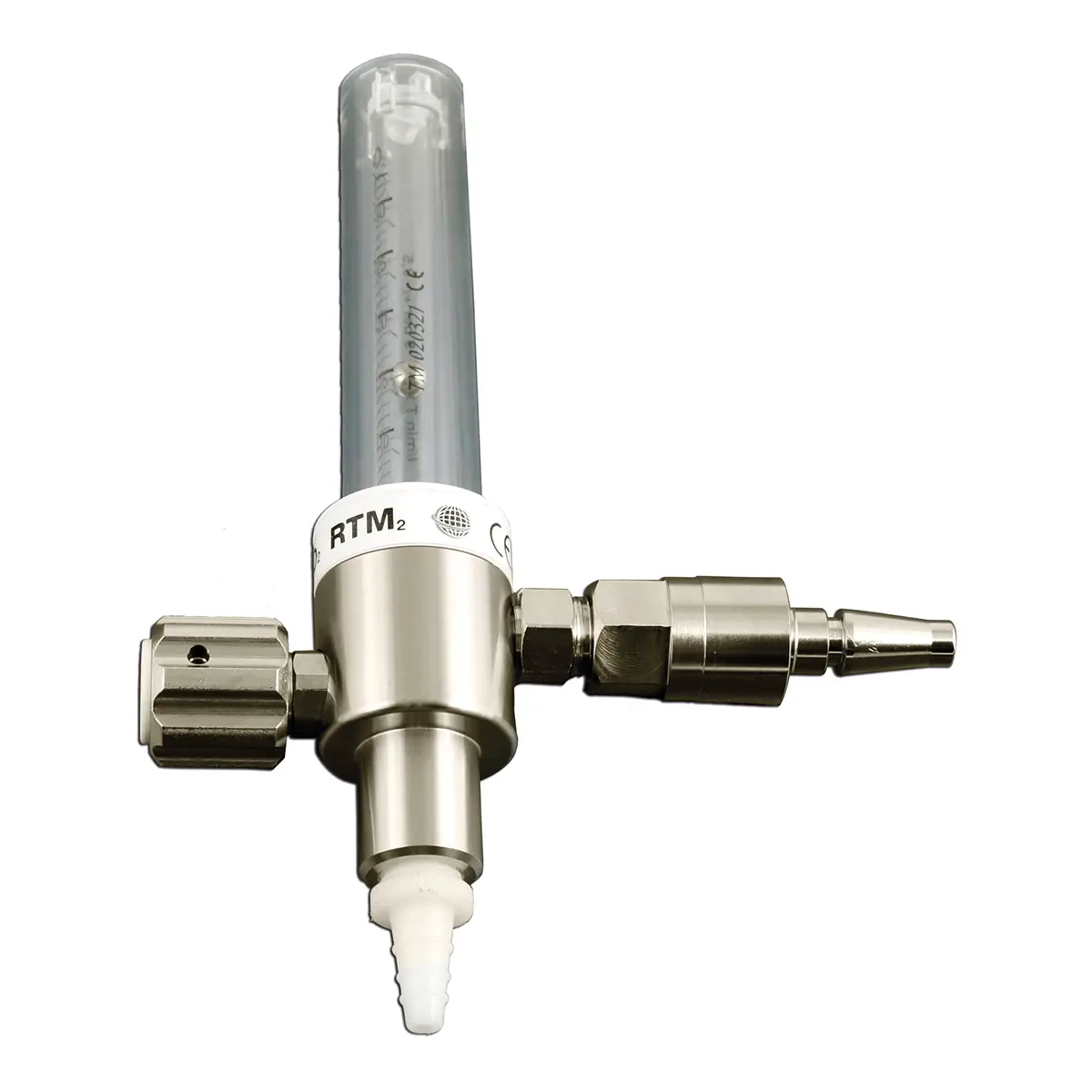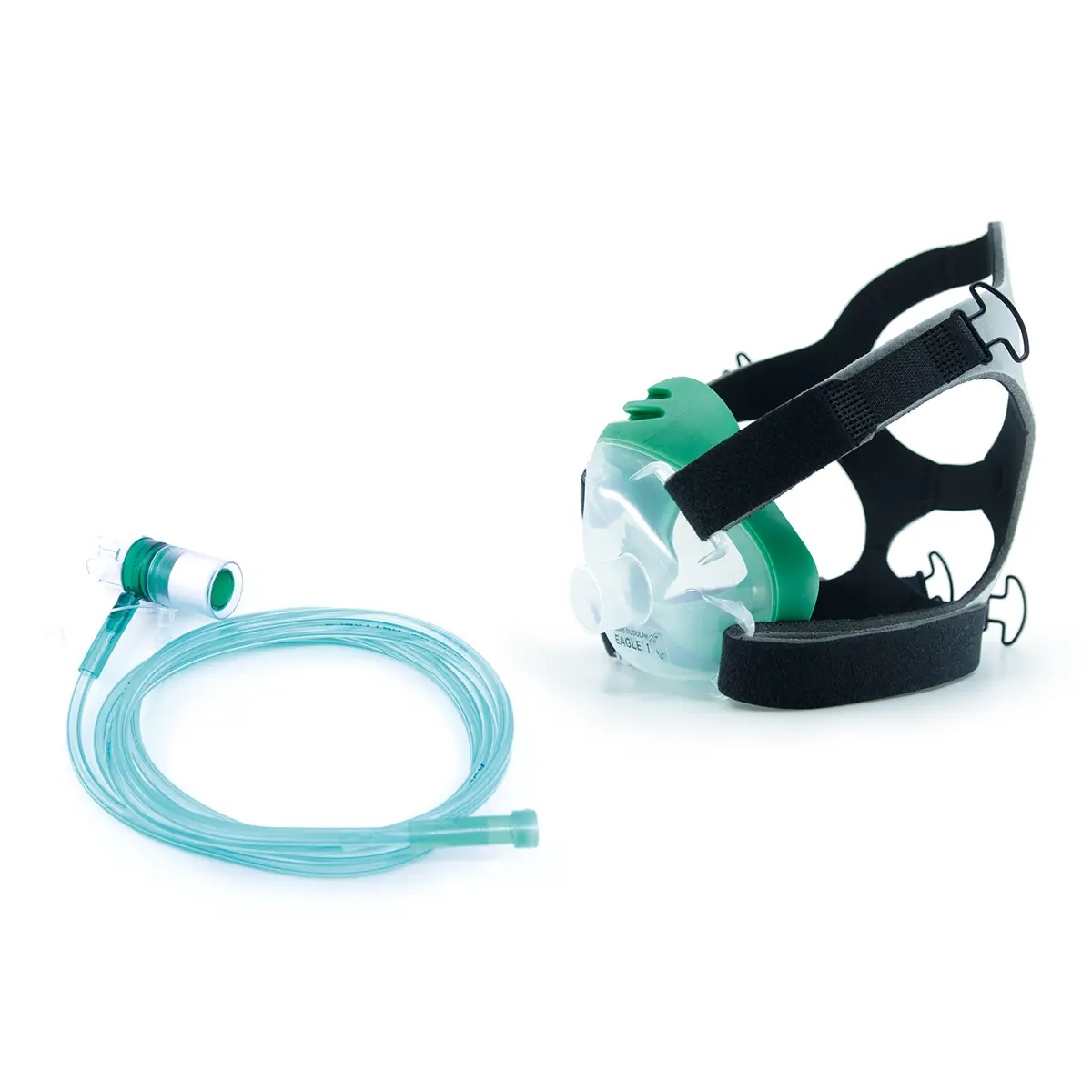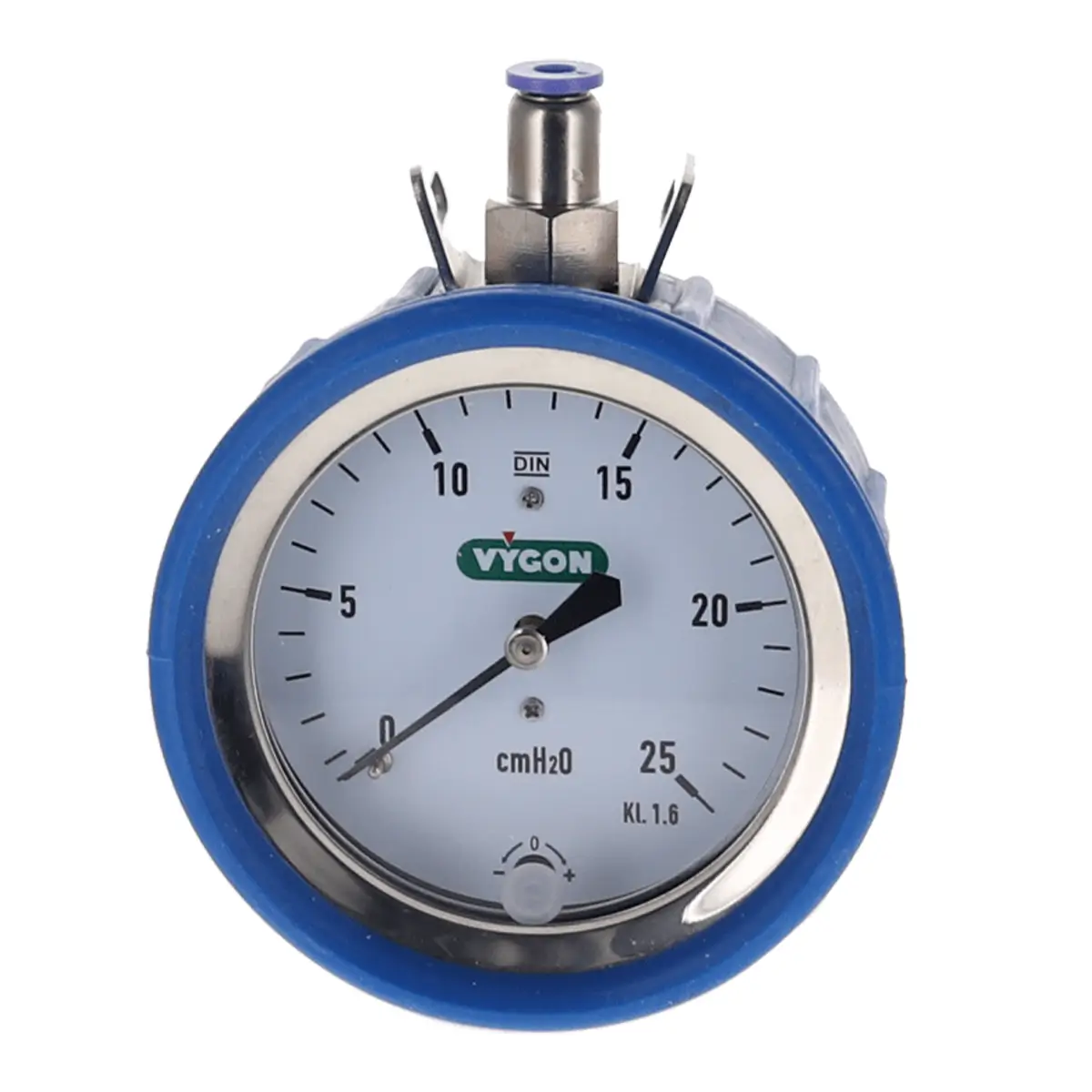Respiratory assistance device for patients with spontaneous ventilation allowing maintenance in the airways of a pressure greater than atmospheric pressure during the entire respiratory cycle.
The CPAP mode of ventilation allows:
– to recruit collapsed alveoles
– to restore a satisfactory level of functional residual capacity
– to improve gas exchange at the level of the alveolocapillary membrane
– to decrease pulmonary resistance
– to decrease the work of breathing
– to redistribute the alveolar liquid to the interstitial space in case of acute pulmonary oedema.
The Boussignac CPAP and its manometer connector is a device for connection to a face mask with its 22 mm male connector, the crenellated upper part remaining open to the air.
This device comprises 2 lateral ports:
– the upper port is preconnected to an extension tube (length 200 cm) for connection to an air or oxygen source
– the bottom port (colourless translucent) allows:
. controlling pressure (use manometer code 527.01),
. an additional oxygen supply if the gas administered to the patient via the upper port is air,
. CO2 monitoring
How it works:
The gases administered to the patient (air, air-oxygen mixture or pure oxygen) pass through the extension tube and arrive in a circular chamber where the gases can only escape into the central zone passing through 4 micro-channels. At that moment, the injection speed of the gases is greatly increased. Deflectors at the exit site of the micro-channels eject the gases arriving at high speed towards the opposite wall.
The collision of gas molecules between themselves generates a turbulence which creates a virtual valve and simultaneously the speed of gases is transformed in pressure. This pressure depends directly on the flowrate: if the flowrate (the amount of gas injected) is increased, the pressure will increase; if the flowrate is decreased, the pressure will decrease.
N.B. It is possible to connect the Boussignac CPAP to an endotracheal tube or to a tracheostomy tube using the adaptor code 555.01 together with an artificial nose such as Hygroflux code 501.01.

